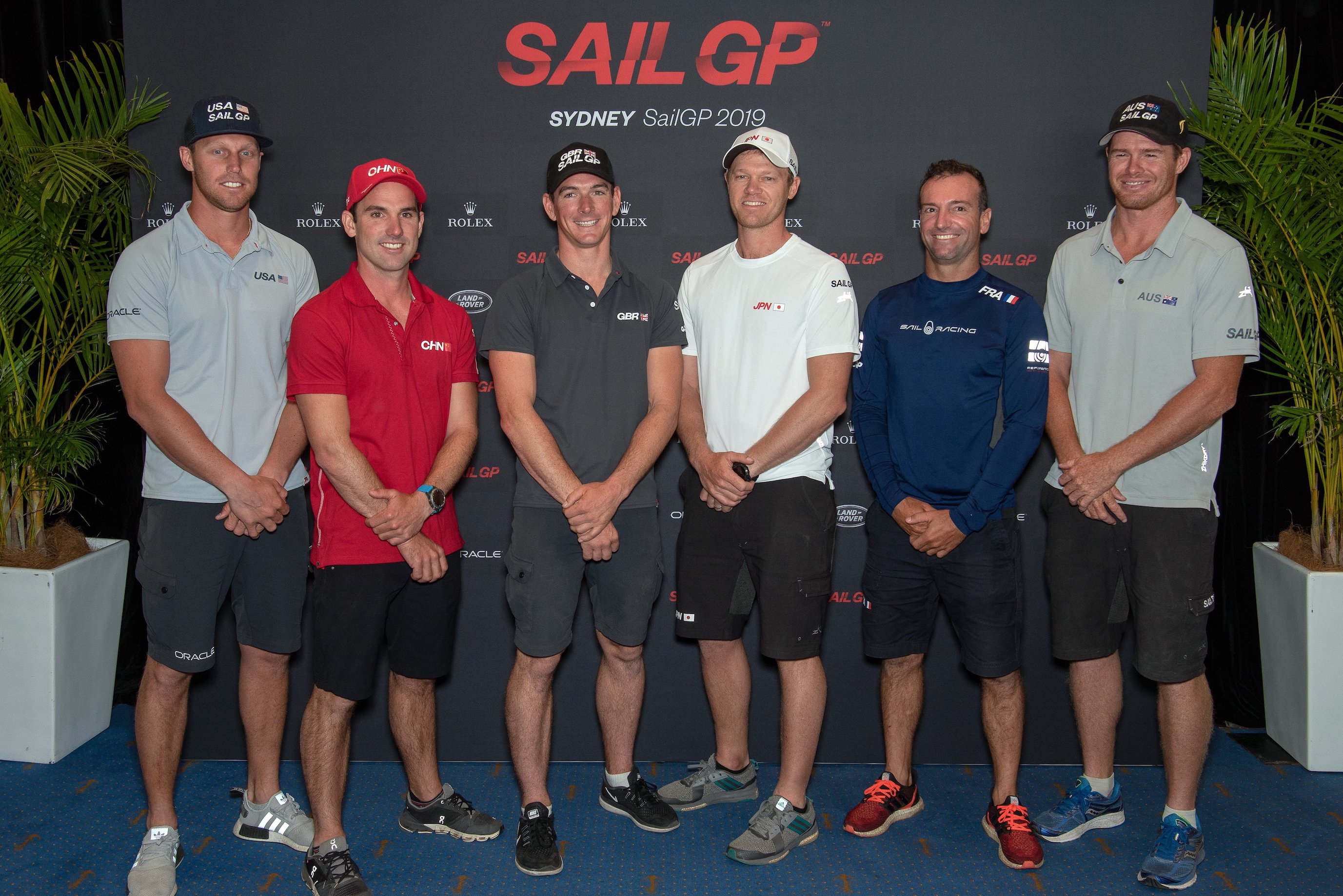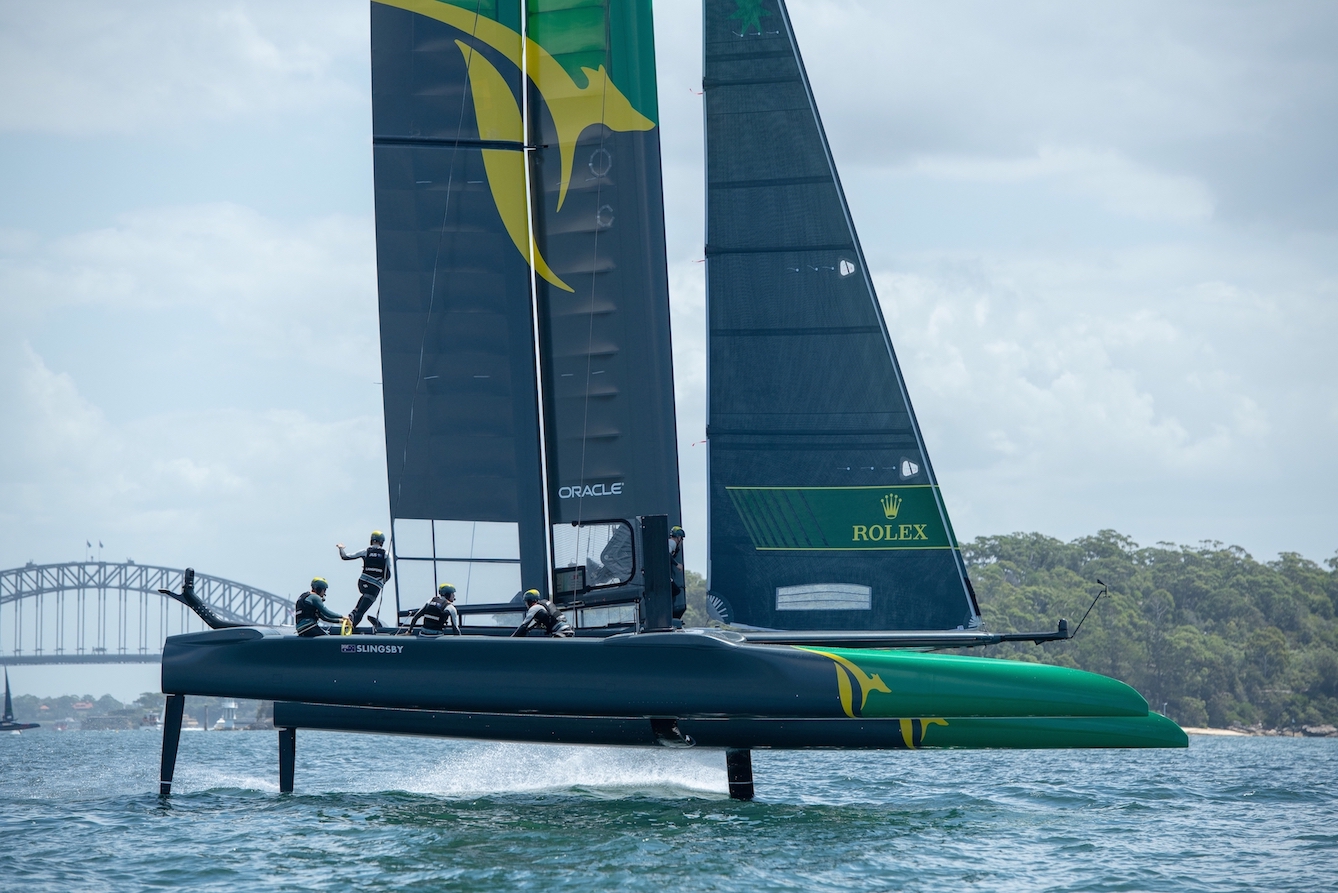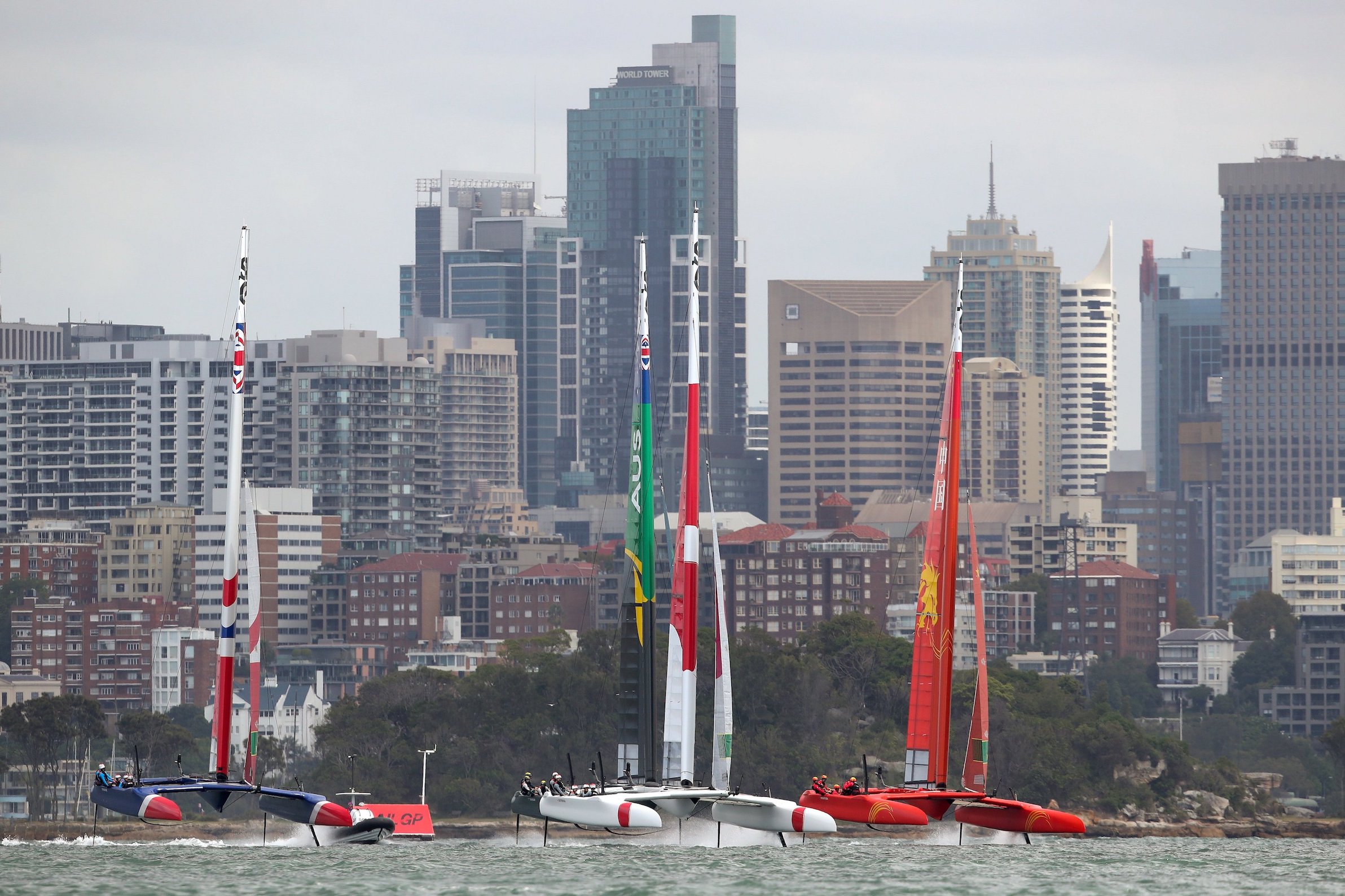Cutting edge
The inaugural SailGP regatta, which kicks-off today, could feature a number of breakthroughs for the sport, including once undreamt-of speeds for wind-powered craft on Sydney Harbour.
Written by Scott Alle
15 February 2019
Advertisement
Sailing has always been pre-occupied by speed.
For a long time though the restrictions of hull shape and the physics of hydrodynamics limited sailing craft to not much more than ten knots.
With the advent of foiling everything has changed; it’s the equivalent of going from a biplane to the jet age. A foil functions in exactly the same way as an airplane – it’s a wing in the water which, at a certain speed, lifts the boat out into the air.
Carbon fibre and new composite materials have enabled better, stronger and more efficient foils to be constructed. That has laid the foundation for a quantum speed leap in sailing.
In 2009 the experimental foiling trimaran Hydroptère officially broke the 50-knot barrier for the first time. At the 2013 America’s Cup the crews had a massive job on their hands trying to keep the AC72’s stable while foiling above the water.
Advertisement
Six years on and another America’s Cup cycle later and the technology has evolved to the point where the sailing speed record for Sydney Harbour of 42 knots, set by Sean Langman’s trimaran Team Australia ORMA in 2014, could easily be smashed by any one of the six turbo-charged F50 catamarans lining-up in the inaugural SailGP regatta.
Indeed, Australia’s SailGP team F50 logged 49.72 knots in 16 knots of wind on relatively flat water during the testing period in New Zealand. There have been speed runs in stronger winds in the past fortnight as the crews have crammed-in flight time on Sydney Harbour but no-one’s admitting to cracking the 50-knot mark.
“I don’t think anyone in the fleet’s seen 50 knots yet, but I’m sure it’s not far off,” predicted USA helmsman Rome Kirby in a special TV show featuring all the F50 skippers.
Sydney’s traditional summer afternoon north-easterly isn’t forecast to hit more than 12 knots for the two days of racing, so given the performance parameters of these boats we could see 35 knots on the digitial readouts – faster than the iconic 18-foot skiffs which are some of the quickest monohulls around.
There’s no question six of these craft lining-up on the one of the world’s showcase sailing venues is going to be a spectacle, which will hopefully help attract new converts to the sport – to watching it at least.
For the skippers the relatively benign forecast is a bit of relief.
Australia’s Nathan Outteridge is undoubtedly the most experienced helmsman out there in these type of foiling cats; six years of America’s Cup campaigning with Artemis Racing, including taking two races off eventual 2017 Cup winner Emirates Team New Zealand, one more than Tom Slingsby and Jimmy Spithill managed on the defender, Oracle Team USA.
Outteridge was closely involved in the development on the new F50 speedsters and will be guiding Team Japan around the track. He probably knows the boats’ quirks better than anybody else and he admits they can be a handful.
“It makes the Harbour feel really small,” he confides. “I’ve done a lot of sailing growing-up here as a kid, I used to think the Harbour was quite big and there was an east and a west channel. Now you go from Shark Island to Bradley’s in 25 seconds., where it used to take you ten minutes.”
Then there’s complex technology; computer software and control systems required to trim the huge wing sail accurately. You can control how fast the wing moves – whether it’s the twist or the camber. Same for the jib and lot of the flight and foil control functions.
On the wheel itself there are six buttons for different functions and twist grips. You have the flight control on the outside of the wheel, and all the different settings in the hub. The flight controller forward of the helmsman will be constantly tweaking.
“There is a surprising amount of control given the eye-watering speeds,” Outteridge reveals. “You can really put the throttle down harnessing so much power in small amounts of wind, you can be doing over three times the wind speed out there very easily. “
Teamwork is also paramount. Three crewmembers at the back have to work total unions to get the best out of the F50. One drives, another controls the power source for the wing, and the flight controller is responsible for piloting the boat. “Whenever you do a manoeuvre all three of you have to be very in sync with who’s pushing what button when to keep it in the air,” Outteridge explains.
One of the big moments will be when all six F50’s representing Australia, USA, UK, France, Japan and China converge on the line at 4pm on Friday.
“In these kinds of boats if you get caught in the pack everyone’s trying to slow each other down,” says Australia’s helmsman and skipper Tom Slingsby.
“It is similar to F1 in that you are looking to get out in front.”
That first crucial start will be hectic; while everyone will be angling for the best exit lane, this will be the first time all the F50’s have been in the same bit of water. Expect some scrapping and possibly scraping of carbon fibre.
As Outteridge notes: “It’s going to be a challenge to keep the boats in the boundaries and avoid each other and I think that’s half the fun of it.”
There will be three fleet races on Friday where all six nations compete, with a further three fleet races on Saturday. It’s shaping-up as adrenaline rush, on land and sea.
Advertisement
Advertisement
Advertisement





